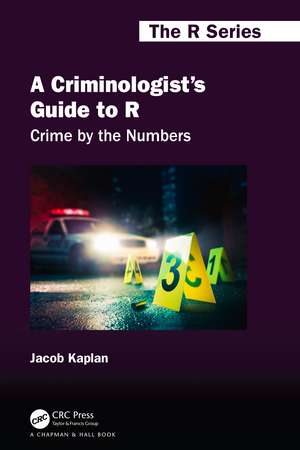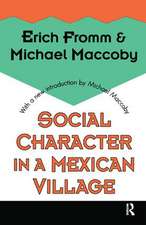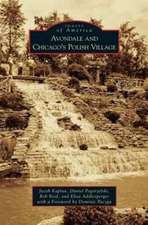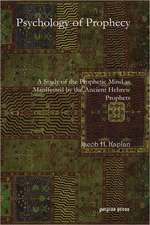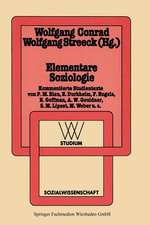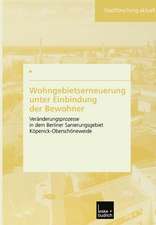A Criminologist's Guide to R: Crime by the Numbers: Chapman &Hall/CRC The R Series
Autor Jacob Kaplanen Limba Engleză Hardback – 15 dec 2022
Key Features:
- Introduction to RStudio including how to change user preference settings.
- Basic data exploration and cleaning – subsetting, loading data, regular expressions, aggregating data.
- Graphing with ggplot2.
- How to make maps (hotspot maps, choropleth maps, interactive maps).
- Webscraping and PDF scraping.
- Project management – how to prepare for a project, how to decide which projects to do, best ways to collaborate with people, how to store your code (using git), and how to test your code.
Din seria Chapman &Hall/CRC The R Series
-
 Preț: 350.96 lei
Preț: 350.96 lei - 20%
 Preț: 542.93 lei
Preț: 542.93 lei - 20%
 Preț: 424.82 lei
Preț: 424.82 lei -
 Preț: 343.32 lei
Preț: 343.32 lei -
 Preț: 358.30 lei
Preț: 358.30 lei - 20%
 Preț: 548.69 lei
Preț: 548.69 lei - 8%
 Preț: 490.79 lei
Preț: 490.79 lei - 23%
 Preț: 1327.47 lei
Preț: 1327.47 lei - 8%
 Preț: 452.19 lei
Preț: 452.19 lei -
 Preț: 400.98 lei
Preț: 400.98 lei - 8%
 Preț: 386.32 lei
Preț: 386.32 lei -
 Preț: 389.17 lei
Preț: 389.17 lei -
 Preț: 391.57 lei
Preț: 391.57 lei -
 Preț: 152.12 lei
Preț: 152.12 lei - 8%
 Preț: 512.40 lei
Preț: 512.40 lei - 20%
 Preț: 421.05 lei
Preț: 421.05 lei -
 Preț: 356.63 lei
Preț: 356.63 lei - 8%
 Preț: 418.06 lei
Preț: 418.06 lei -
 Preț: 373.05 lei
Preț: 373.05 lei - 8%
 Preț: 544.64 lei
Preț: 544.64 lei -
 Preț: 359.66 lei
Preț: 359.66 lei - 8%
 Preț: 437.61 lei
Preț: 437.61 lei -
 Preț: 358.22 lei
Preț: 358.22 lei -
 Preț: 260.53 lei
Preț: 260.53 lei - 8%
 Preț: 422.96 lei
Preț: 422.96 lei - 8%
 Preț: 438.87 lei
Preț: 438.87 lei -
 Preț: 356.63 lei
Preț: 356.63 lei - 20%
 Preț: 308.68 lei
Preț: 308.68 lei -
 Preț: 230.57 lei
Preț: 230.57 lei - 17%
 Preț: 271.58 lei
Preț: 271.58 lei - 15%
 Preț: 494.20 lei
Preț: 494.20 lei -
 Preț: 392.33 lei
Preț: 392.33 lei - 9%
 Preț: 835.78 lei
Preț: 835.78 lei - 20%
 Preț: 1329.88 lei
Preț: 1329.88 lei - 22%
 Preț: 447.69 lei
Preț: 447.69 lei - 24%
 Preț: 566.03 lei
Preț: 566.03 lei - 35%
 Preț: 842.05 lei
Preț: 842.05 lei - 18%
 Preț: 1082.45 lei
Preț: 1082.45 lei - 20%
 Preț: 578.11 lei
Preț: 578.11 lei - 26%
 Preț: 1014.74 lei
Preț: 1014.74 lei - 20%
 Preț: 1066.99 lei
Preț: 1066.99 lei - 27%
 Preț: 527.72 lei
Preț: 527.72 lei
Preț: 463.47 lei
Preț vechi: 594.13 lei
-22% Nou
Puncte Express: 695
Preț estimativ în valută:
88.69€ • 92.83$ • 73.81£
88.69€ • 92.83$ • 73.81£
Carte tipărită la comandă
Livrare economică 31 martie-14 aprilie
Preluare comenzi: 021 569.72.76
Specificații
ISBN-13: 9781032244075
ISBN-10: 1032244070
Pagini: 432
Ilustrații: 2 Tables, black and white; 4 Line drawings, color; 45 Line drawings, black and white; 29 Halftones, color; 89 Halftones, black and white; 33 Illustrations, color; 134 Illustrations, black and white
Dimensiuni: 156 x 234 x 26 mm
Greutate: 0.82 kg
Ediția:1
Editura: CRC Press
Colecția Chapman and Hall/CRC
Seria Chapman &Hall/CRC The R Series
ISBN-10: 1032244070
Pagini: 432
Ilustrații: 2 Tables, black and white; 4 Line drawings, color; 45 Line drawings, black and white; 29 Halftones, color; 89 Halftones, black and white; 33 Illustrations, color; 134 Illustrations, black and white
Dimensiuni: 156 x 234 x 26 mm
Greutate: 0.82 kg
Ediția:1
Editura: CRC Press
Colecția Chapman and Hall/CRC
Seria Chapman &Hall/CRC The R Series
Cuprins
1 A soup to nuts project example 2 Introduction to R and Rstudio 3 Data types and structures 4 Reading and writing Data 5 Mise en place 6 Collaboration 7 R Markdown 8 Testing your code 9 Git 10 Subsetting: Making big things small 11 Exploratory data analysis 12 Regular Expressions 13 Reshaping data 14 Graphing with ggplot2 15 More graphing with ggplot2 16 Hotspot maps 17 Choropleth maps 18 Interactive maps 19 Webscraping with rvest 20 Functions 21 For Loops 22 Scraping tables from PDFs 23 More scraping tables from PDFs 24 Geocoding
Notă biografică
Jacob Kaplan is the Chief Data Scientist of the Research on Policing Reform and Accountability (RoPRA), a multi-disciplinary, multi-institutional team of social scientists studying the feasibility and efficacy of policing reform, with a focus on statistically rigorous research and practical applications. His current appointment is at the Princeton School of Public and International Affairs. He holds a PhD and a master’s degree in criminology from the University of Pennsylvania and a bachelor’s degree in criminal justice from California State University, Sacramento. He is the author of several R packages that make it easier to work with data, including fastDummies and asciiSetupReader. He is also the author of books on the two primary criminal justice data sets: the FBI’s Uniform Crime Reporting (UCR) Program Data, and the FBI’s National Incident Based Reporting System (NIBRS) data.
Recenzii
"While many introductory R books use heterogeneous examples, here, the author did a great job introducing the R programming language using examples from criminology in a homogenous way. This book also offers a valuable compendium of crime related datasets for those already familiar programming in R. Specially, for graduate students, researchers, and data scientists, that wish to conduct more complex analyses on these types of data."
- Enrique Garcia-Ceja, Tecnologico de Monterrey, Mexico, Technometrics, November 2023.
- Enrique Garcia-Ceja, Tecnologico de Monterrey, Mexico, Technometrics, November 2023.
Descriere
This book introduces the programming language R and covers the necessary skills to conduct quantitative research in criminology. By the end, a person without any prior programming experience can take raw crime data, be able to clean it, visualize the data, present it using R Markdown, and change it to a format ready for analysis.
